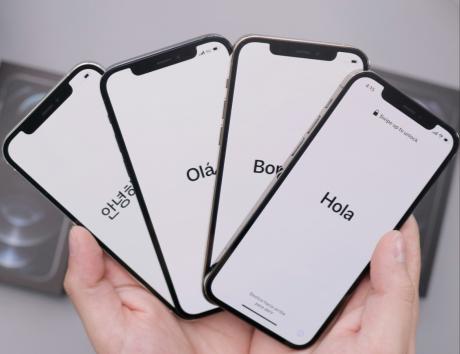How to Structure and Write a Bilingual Resume
Speaking multiple languages is a valuable competency that benefits many roles. Countless employers want to see bilingual proficiency on a resume, so if you have the skills, it pays to show them off. This guide shows you how to write an impressive bilingual resume and stand out from the crowd.

Should you list “bilingual” on resumes?
Bilingual skills are vital to some roles and helpful for thousands of them. It’s important to mention your language proficiency at least once, even if the open position doesn’t mention or require it. This ability can be quickly listed in your resume’s Skills section or in a small Language section in a side column.
However, if a job description lists bilingual skills specifically, either as a “must-have” or “nice-to-have,” it’s crucial to showcase your bilingual skills in a noticeable, obvious way. You need the hiring manager to see your language skills in the first few seconds as they scan your resume – this tells them you’re a likely candidate immediately, and recruiters only spend a few seconds on each resume.
The top benefits of a bilingual resume
When crafting a resume, bilingual skills are important to mention and bring many impactful benefits.
The most obvious benefit is when applying for a bilingual role. This is often in the title of a job post, such as Bilingual Project Manager (French/English). Commonly, these roles are ones that interact with people frequently, such as a project manager who must liaise between French-speaking clients and an English-speaking team.
Bilingual resumes also help job seekers in specific countries or markets. Many places in the US, such as California, New Mexico, and Texas, have a large number of Spanish-speakers, so if you’re bilingual in English and Spanish, resumes should reflect that.
Canadian resumes are often bilingual, with many applications in both English and French.
Bilingual resumes don’t just help you showcase your role qualifications – they also show respect and courtesy for the hiring manager. In places like Canada or California, the hiring team may speak different languages, and writing your resume in two languages makes it easy for everyone to understand it.
The main differences between a bilingual resume and an English resume
Bilingual resumes and traditional English resumes have a few distinct differences but a lot of similarities, too.
These documents typically have the same headers, examples, and metrics, but a bilingual resume should repeat the information a second time in another language. Here’s an example:
Work Experience / Expérience professionelle
Sales representative / Représentant commercial
Lucky Break Solutions, Montréal, Quebec, Canada
February 2020 – March 2023 / Février 2020 – Mars 2023
It’s nearly identical to an average resume but provides the information in your other known language. This showcases how fluid you are and also shows consideration for anyone in the hiring process who can’t speak one of the two languages.
However, writing the same information twice can significantly lengthen a resume, which makes most bilingual resumes longer than traditional English resumes – typically at least two pages long.
As a general rule, resumes should only be one page long as recruiters don’t want to spend too much time on each application, but it may be difficult to trim your resume down when you need to add everything twice.
“It’s important to mention your language proficiency at least once, even if the open position doesn’t mention or require it.”
How to structure a bilingual resume
Let’s take a look at how to put “bilingual” on resumes and how to structure bilingual resumes.
It’s best to use a professional resume template so can comfortably flex your resume and include all necessary sections, so check out our user-friendly resume layouts.
Title
Your job title usually sits right beneath your name and instantly tells the recruiter that your application is relevant. There are two ways to adapt your job title to a bilingual resume.
The first way is simple: translate your job title and put it side-by-side with your English one. Like this:
Account Manager / Gerente de cuentas
Another way is to work “bilingual” into your job title:
Bilingual Account Manager (Spanish/English)
This conveys relevance and may help you get past applicant tracking systems (ATS). An ATS resume is an application that uses terms similar to a job description, showing a company’s ATS platform that your resume suits the role.
Contact details
You can translate your contact details into your other language here, but that’s the only way to work in a mention of your bilingual skills. Your contact details should be straightforward and succinct, so don’t lengthen them with anything irrelevant.
Resume summary or objective
A resume summary or objective is the perfect place to show your bilingual skills. Mention your proficiency in your job title and include any achievements that involve your language abilities. Here’s an example:
“Dedicated customer service professional with 5 years of experience, bilingual in English and Mandarin Chinese. Expertise in solving customer issues for nearly every customer, catering to the town’s local Chinese population.”
You can also translate your summary into another language to really display your abilities. These descriptions are complex, and translating them well takes keen skills.
Keep in mind that summaries and objectives are unique and serve different professional levels. Summaries are for experienced workers, and objectives are best for students and people who are changing careers. Check out our collection of resume samples to see realistic examples of both types of descriptions.
Work experience
This section is a great place to display bilingual skills. You can, of course, repeat all your information in your second language again, but this area is great for displaying what your language skills can do.
List achievements that involve your language skills, such as solving client disputes, clarifying employee confusion, or even translating important documents. Here’s an example:
“Managed complex stakeholder requirements, acting as a liaison between an English technical team and a French client. Translated complex English technical terms for French stakeholders, leading to a 98% client satisfaction rate and a strong partnership.”
Education
Many people are naturally bilingual, so there’s no need to add formal education. However, thousands of professionals learned their language skills at institutions such as universities or community classes. List relevant courses and certificates to show your skills officially.
You can also place language certification here. For example, you may take a test to certify that you speak CEFR French C2. This certificate is a powerful way to display your qualifications.
Courses
Similar to education, this is where you list online courses and lessons. They aren’t as formal as higher education, but they’re still valuable and display your commitment to continuous learning.
Here’s a pro tip for success: Include links to your online courses and lessons if they aren’t well known. This gives the recruiter easy access to the course so they know which lessons you’re talking about.
Internships
This section is similar to a Work Experience section and is mainly used by recent graduates. Students may lack a work history, but if they have previous internships, this shows the same use of professional skills.
It’s particularly helpful if you can list internships from different countries or bilingual companies. This shows you have experience actively working in your second language.
Skills
If you want to simply mention your skills and nothing more, the Skills section is the ideal way. Many positions don’t require bilingual abilities, so it’s better not to take up too much space trying to prove it. However, if you have the abilities, it’s important to mention them just in case they’re valuable to the role.
Simply place language skills right next to your other skills in the bullet list – something like “Fluent Spanish proficiency” works fine.
Languages
Making a separate language section is best for professionals who speak upwards of two languages. Create a small side column and list your known languages and proficiency level to give hiring managers a quick reference.
Expert Tip:
Do’s and don'ts when making a bilingual resume
Let’s quickly summarize the top tips for building a bilingual resume:
- Research the job description and discover how relevant your bilingual abilities are to the role.
- Repeat all information in both languages if you’re fairly certain the hiring team speaks a different language.
- List your proficiency as well as the language. This shows employers your communication skills and how well you interact with others.
- Mention how you use your language skills in your role. For example, bilingual management skills include being able to coach employees in your second language.
- Include achievements you accomplished with your language skills.
- Try your best to keep your resume to one page. This is less of a concern when building a Canadian resume, where it’s more normal to have a two-page resume.
Show your communication skills with a bilingual resume
Communicating in two different languages is valuable to thousands of employers, so make your skills clear and catch the hiring manager’s eye with a bilingual resume.
Make it large and noticeable for bilingual roles to ensure it isn’t missed – but include a small mention on every resume, just in case. It may not be a requirement, but an employer might find it extremely helpful.
Put these tips to use today by using CVwizard’s resume maker. Easily provide your information in multiple languages, or even create a languages section with customizable proficiency stars to quickly convey your skills.
Make an impression with your resume
Create and download a professional resume quickly and easily



